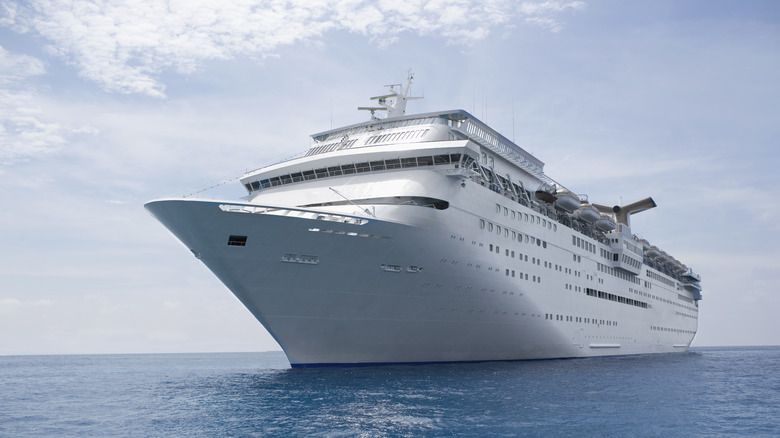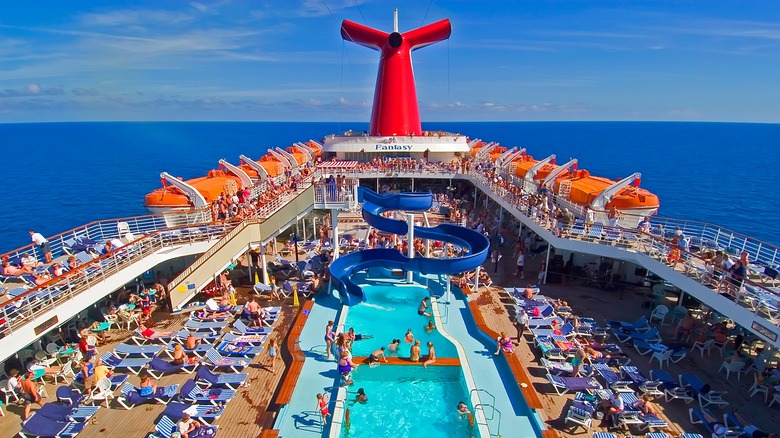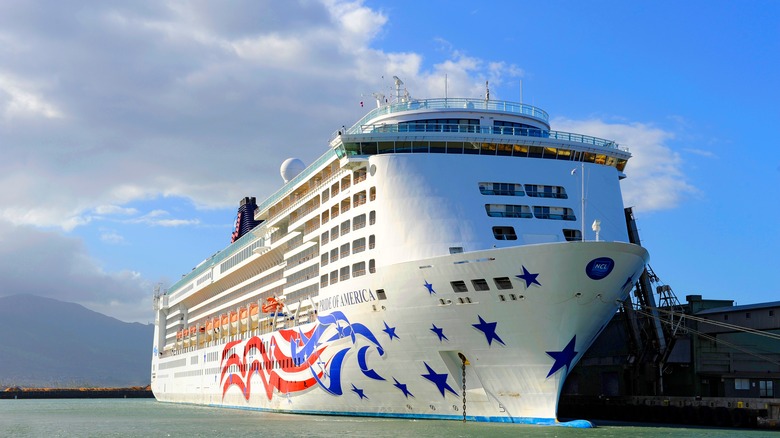Why This Mysterious And Fun Type Of Cruise Is Now Banned In The US
Imagine you're about to embark on a cruise. You get onto the ship, and everyone is getting settled and into "party mode." You do the safety demonstration and are ready to get your vacation started. But what's your destination? Nowhere. Yes, nowhere. Technically, the destination is international waters, but you won't be getting off the boat until you get back to port several days later.
At first, a "cruise to nowhere" seems antithetical to the idea of a cruise vacation. After all, many people take these trips to explore parts of the world that would be challenging or expensive to visit otherwise. However, there are a few compelling reasons to book one of these nowhere cruises, especially if you love buffet food, resort amenities, and gambling.
Unfortunately, these cruises are now practically nonexistent in the United States thanks to a couple of maritime regulations. While many companies skirted around these laws in the past with some creative loopholes, the practice stopped in 2016 when the U.S. Customs and Border Protection started enforcing the rules more strictly. So have you missed the boat on this opportunity? Let's break it down.
The lowdown on cruises to nowhere
First and foremost, why would anyone book a cruise where the boat is the destination? One compelling reason is that you can enjoy a full resort experience for a weekend rather than having to book a full week (or pay exorbitant resort prices). Another is that gambling is allowed on cruises once they reach international waters. So, if you live in an area without casinos, a journey to nowhere lets you indulge a little without an expensive trip to Vegas or Atlantic City.
Technically, these cruises are not officially "banned." However, they're very hard to operate, and without overwhelming demand, it's just easier to stop offering them altogether. The problem dates back to the Merchant Marine Act (aka the Jones Act) of 1920. This legislation says all ships moving between U.S. ports (or returning to the same port) must be U.S.-flagged.
This designation means the ship, crew, and company must be U.S.-based. Most cruise lines are based in other countries like Bermuda, the Bahamas, and Panama. Also, most have foreign-based crews who work on a D-1 visa (thanks to the Passenger Services Vessel Act, or PSVA). This permit allows them to stay in the U.S. temporarily, but they must visit a foreign port before returning to the States. Overall, it's just too much work and investment for a cruise company to maintain a U.S.-flagged vessel for one type of cruise.
How to enjoy a cruise to nowhere (or a suitable alternative)
Currently, one of the only official U.S.-flagged cruises is the Pride of America by Norwegian Cruise Line. Because it departs from LA and goes to several Hawaiian islands, it must adhere to the Jones Act and PSVA. While it's not technically a cruise to "nowhere," the ship is at sea for several days during the journey, so you get more time aboard the liner than you would with a cruise to a different location like the Bahamas or Mexico.
Speaking of the Bahamas or Mexico, most of these cruises are just for a weekend, so if the idea of a three-day cruise sounds appealing, you can book one of these excursions. Also, just because the ship docks at a foreign port doesn't mean you have to get off. You can just remain on the boat and enjoy its amenities as if it were a cruise to "nowhere."
Finally, you can depart from a different country instead of the United States, like Australia. While this obviously involves getting to that region first, if you're planning to stay there for a while, a cruise to nowhere may be a good way to mix things up (e.g., taking a weekend singles trip for some extra fun on your vacation).


